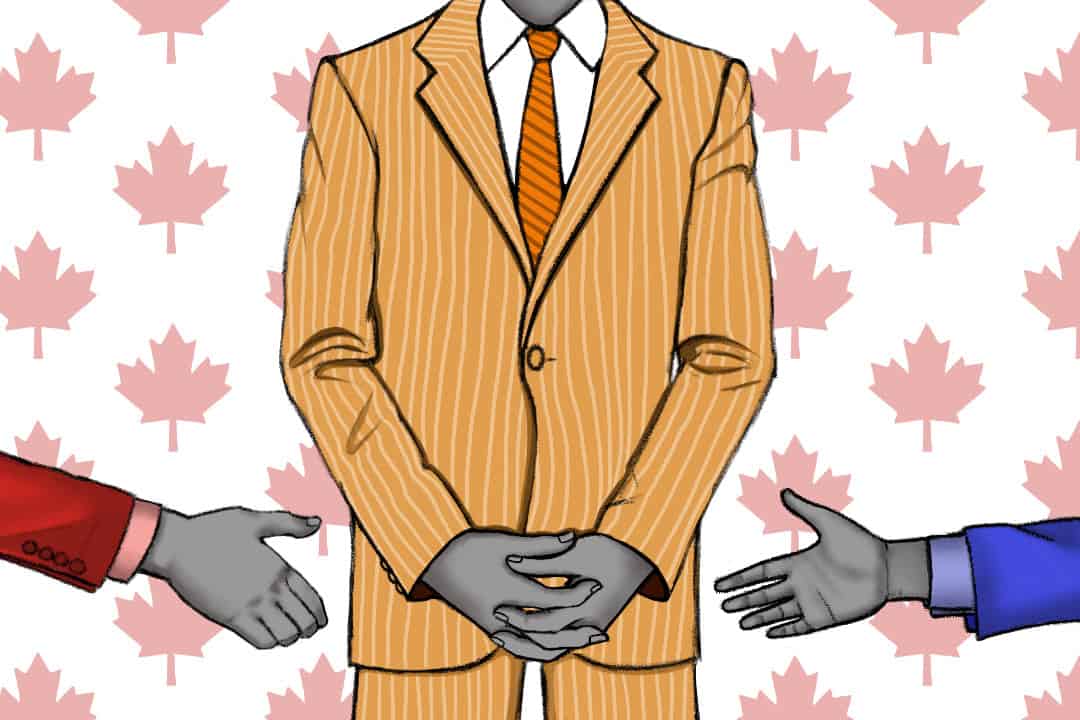Difficult questions hang in Ottawa as Canada’s scheduled 2025 federal election looms closer, the Conservative Party’s failed vote of non-confidence lingers, and Prime Minister Justin Trudeau’s Liberal government sits at a historically low approval rating. In my opinion, the question that needs the most urgent answer is: “What’s next for the NDP?”
On September 25, Conservative Party leader Pierre Poilievre forwarded a parliamentary motion of non-confidence, which if passed, would have triggered an early federal election and potentially ousted the Liberals out of rule. However, the Conservatives needed the support of both the Bloc Québécois and the NDP for the motion to pass. They failed to garner the support, resulting in the motion being voted down by 211–120.
The NDP’s decision to back the Liberals was particularly confusing to me, especially after branding Trudeau and his government as “too weak, too selfish and too beholden to corporate interests to fight for people” on September 4 when pulling out of their supply-and-confidence deal that they co-signed in 2022.
If NDP leader Jagmeet Singh’s plan is to sustain this hypocritical strategy until next year’s scheduled election, the NDP may be in serious trouble. In my view, his hypocrisy alienates the Liberal base, who will brand the NDP as traitors of the ‘left-wing.’ At the same time, the NDP will maintain their negative reputation as Liberal sellouts among the remaining electorate, including NDP voters: a worst of both worlds solution to their precarious position.
The NDP-Liberal relationship
Over the last years, Singh has, for better or worse, inextricably tied his party to the Liberals through the supply-and-confidence deal: an arrangement that pledged the NDP’s unconditional support on all bills that the Liberals attempt to pass. While this deal allowed the NDP to secure some policy victories — chiefly universal dental care and a National School Food program — it also linked the party to a minority government currently overseeing a catastrophic cost of living crisis in Canada. I am sure that in the eyes of many voters, the NDP is equally culpable in this economic tailspin.
This perceived culpability is particularly noticeable with Singh, who the growing Conservative base often brand as ‘Sellout Jagmeet Singh.’ Although Singh’s recent decision to pull from the supply-and-confidence deal may suggest a tougher attitude on the Liberals, I believe this will do little to change Singh’s image as Trudeau’s ‘yes-man’ among many voters.
The NDP’s dwindling influence is reflected in polling data. The Conservative Party sits far and away in first place, projected by CBC to form a majority government with 218 seats — far ahead of the Liberals, who are expected to secure only 63 seats. Meanwhile, the NDP is sputtering toward a drop to 21 seats from their current 25. Notably, the Conservatives are even leading among traditional NDP strongholds, including union members and young voters.
Party leadership isn’t faring much better. Singh fell from the highest approval rating out of all party leaders at 39 per cent in early 2022 to second lowest at 33 per cent in 2024. He is ahead of only Trudeau, who is currently at an abysmal 24 per cent. Furthermore, the Liberal government — which holds a historic low approval rating of 33 per cent — faces the Conservatives’ constant efforts to call an early election, including an attempt on March 21. These attempts failed due to the NDP and the Bloc Québécois’ support of the Liberals.
This sums up the NDP’s trajectory over the last 10 years. From former NDP leader Tom Mulcair to Singh, I think the party has presented a middling and inoffensive platform along with an electoral strategy that has failed to capture any opportunities afforded to them.
My opinion is that Singh is wasting a golden opportunity to position the NDP as the clear leftist alternative to the unpopular Liberal party. Instead, Singh is steering the party toward a much worse fate: a potentially catastrophic loss in 2025 and, in the long term, political obsolescence and redundancy alongside the Liberals.
What now?
To get out of this tough position, the NDP must do everything within their power to distance themselves from the Liberal government.
The first step is for the NDP to vote in favour of the next motion of non-confidence, which has been tabled by Poilievre just a day after the September 25 vote. While this may not actually trigger an election — as the Bloc Québécois currently seems to support maintaining a Liberal government — it will represent the NDP’s substantial act of defiance from the Liberals.
Secondly, I believe the NDP must drop Singh. Whether he finally reads the writing on the wall and resigns like Joe Biden, or party members vote him out at the next leadership convention, Jagmeet Singh must go. I see potential replacements ranging from former Alberta NDP leader Rachel Notley, to former NDP leadership contender Niki Ashton, to Hamilton-Centre MP Matthew Green — though any candidate with a fresh start and clean slate will do.
This course of action may be the NDP’s last opportunity to jump ship from a deeply unpopular government, providing a golden parachute to escape the downward loss of voters. The NDP must get back on course from their decade-long slump.
Mitchell Melançon is a first-year student at Woodsworth College. He is a former Ontario NDP staffer.



No comments to display.